President Biden offered sharp criticism of Israeli Prime Minister Benjamin Netanyahu’s government Tuesday, calling for a change to the approach embraced by Israel’s leadership — which Biden described as “the most conservative” in Israel’s history. The president said Israel was beginning to lose support around the world due to “indiscriminate bombing” in remarks made during a fundraiser in Washington, and urged Israel to seek a long-term solution to the Israeli-Palestinian conflict. He added that he warned Netanyahu about repeating mistakes made by the U.S. after 9/11, while reiterating his support for Israel’s mission to “take on Hamas.”
16 December 2023
Can Hamas actually be eliminated? This is what military and security analysts think
Natasha Turak
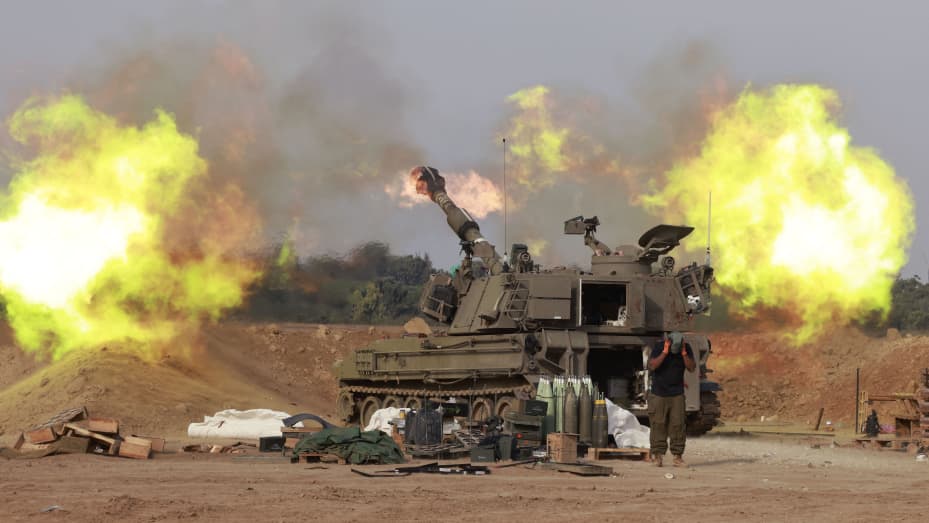
Israel’s war against Hamas — which has turned the blockaded and then besieged Gaza Strip into a post-apocalyptic wasteland — is now in its third month.
The offensive, launched on Oct. 7 after Hamas militants killed some 1,200 people in Israel in a brutal terror attack and took another 240 hostage, has now killed more than 18,000 Palestinians in Gaza, health authorities there say. Hospitals have ceased to function, entire families have reportedly been wiped off the registry and scores of aid workers and journalists are among those killed.
The aim, Israel’s government says, is to fully eliminate Hamas — it denies targeting civilians, although even its staunchest ally, the United States, is now saying that it must do more to protect civilian life.
Hamas, an Islamist militant and political organization designated as a terrorist group by the U.S. and European Union, has governed the Gaza Strip since 2007. It has a stated goal of destroying the state of Israel, which the United Nations classifies as an occupier over the Palestinian territories since 1967. In the years since Hamas took power in the small enclave, its capabilities, finances and weapons supplies have grown significantly, thanks to financial support from the likes of Iran and Qatar.
CNBC spoke to ten experts in counterterrorism, Middle Eastern history and security, and military operations to get their answers to the question: Can Hamas be, in fact, eliminated?
Gaza and Ukraine show that war hasn’t become futuristic — it’s still hell
MICHAEL P. FERGUSON

The Israel Defense Forces clashed with Hamas last week in the most intense day of house-to-house fighting since the Gaza campaign began. Roughly 1,200 miles north, Ukrainian troops shivered in their trenches as they settled in for another long winter of attrition with the Russian army. To the distant observer, the innovative aspects of these wars generate the most interest, but this emphasis on tools can obscure the physical demands imposed upon the humans waging them.
In his classic history of the decline and fall of the Roman Empire, Edward Gibbon wrote that although Rome’s armies were led by men of “liberal birth and education,” their ranks were filled with the “meanest” and “most profligate” of mankind — for they were the ones who won the battles. Although these are not ideal virtues for soldiers today, ground wars still require of their participants a type of communion with violence that may seem antiquated in the 21st century.
Gen. Matthew B. Ridgway, who was commander of U.S. airborne forces during World War II, characterized American foot soldiers as “determined killers in combat, compassionate neighbors in camp.” The modern world and its technological novelties have convinced many that Gibbon’s paradigm is now inverted and such miscreants are of little value in America’s algorithmic wars of choice.
Mike Allen and Jim VandeHei of Axios recently endorsed this philosophy, proclaiming that “future wars will be won with Stanford [University] nerds” and “precision robotics.” They quote former Google CEO and Pentagon whisperer Eric Schmidt, who thinks it is “clear that drones and other weapons … can replace tanks, artillery and mortars,” and the war in Ukraine “proves this point.” This would be news to anyone fighting there.
Rape as a weapon: why war's 'oldest, most silenced' crime is on the rise
HARRIET MARSDEN

The Israeli government has given evidence to the United Nations claiming Hamas militants used rape and sexual violence against women during the 7 October atrocities.
First responders and mortuary workers described multiple signs of sexual assault and torture on female bodies, the BBC reported, including mutilation, inserted objects and broken pelvises. Videos of naked and bloodied women being paraded around Gaza have circulated online.
Police say they have "multiple" eyewitness accounts of sexual assault, reported the broadcaster, but at the time of the BBC report, "they hadn't yet interviewed any surviving victims". Hamas has denied that its fighters sexually assaulted anyone.
"The trendlines for conflict-related sexual violence are worsening," the UN special representative on the issue, Pramila Patten, warned in July – before the outbreak of war in the Middle East. Each new conflict brings new waves of what Patten described as "war's oldest, most silenced and least condemned crime".
Why is rape used in war?
Rape has always existed in war. The breakdown of law and a hypermasculine military culture are often cited as contributing factors. The purpose can range from intimidation and psychological trauma to the spread of disease and forced pregnancies. More recently, rape has been documented as a tool of ethnic cleansing and genocide.
Hamas vs PLO: Anatomy of Anti-Israel Resistance
Salman Rafi Sheikh

Since October 7, at least 273 people have been killed by Israeli forces in the West Bank region even though the Palestine Liberation Organization itself has been neither involved in nor supported Hamas’s attacks. Yet the West Bank continues to operate without an uprising. Whether Israeli attacks ultimately lead to an uprising is questionable, but it certainly is entirely imaginable.
In the historical roots of the conflict, and how Western powers contributed to it by essentially facilitating Jewish settlement on Palestinian lands, there were few if any substantial differences between the Hamas-led Gaza and the Palestine Liberation Authority-led West Bank. But political differences have evolved over time, and these differences are at the heart of why armed resistance is today confined to Gaza, although the West Bank Palestinians, too, continue to encounter Israeli violence in their everyday lives.
The differing response can be traced back many decades, but it came to light in 2007 when Hamas fought Fatah, one of the largest factions comprising the PLO, after Hamas defeated Fatah in the 2006 elections. Even though Hamas won a legitimate election, the West still saw it as a terrorist organization because of its anti-Israel stance – a framing that Arab states didn’t necessarily challenge. Today, Hamas’s view of Israel as an illegitimate state is what makes it different from the PLO.
PLO/Fatah doesn’t pursue this objective in the same manner as it did following the years after its 1964 creation. After briefly pursuing the possibilities of an independent state of Palestine and “de-ZioniZation” of the region, the PLO, backed by several Arab states, adopted a two-state solution as its primary goal in 1977, leading to the US-mediated 1993 Oslo Accords and the establishment of the internationally recognized Palestinian Authority (PA).
Fears of Suez Canal Closure as Red Sea Threats Persist
Chloe Mayer
A Norwegian oil tanker in the Red Sea was blasted by a missile fired from Yemen's Houthi rebels—in an attack that could have far-reaching implications for international trade and the global economy.
The assault on the tanker on Tuesday apparently marks an escalation for the Iran-backed group, which recently admitted responsibility for targeting Israeli or Israeli-linked commercial ships in the region.
The Houthis support Palestinian-based Hamas, a U.S.-designated terror group that is at war with Israel after it launched a deadly attack on the country on October 7 and kidnapped hundreds of civilian hostages. Israel responded with a series of devastating airstrikes across Gaza and a ground invasion, reducing entire areas to rubble.
But the latest attack against the Strinda, a Norwegian-flagged tanker with no apparent ties to Israel, suggests the Houthis have expanded their campaign, according to the Associated Press. By firing at ships close to the Bab el-Mandeb Strait—which is an entryway to the Red Sea and the Suez Canal—the group could potentially choke off access to crucial global shipping routes and increase the international impact of the war currently raging in the Middle East.

Houthi fighters have claimed responsibility for a missile strike against a Norwegian-flagged oil tanker on Tuesday. Pictured: Houthi rebels storm the Galaxy Leader in the Red Sea off the coast of Yemen on November 20, 2023.
Israel determined to finish Gaza operation despite civilian suffering
Jeremy Bowen

Israel is on holiday. Schools are out, and away from the frontline areas the shopping centres are full. Cake shops are bursting with the doughnuts that Jews like to eat during Hanukkah, the current religious festival.
It is different the closer you get to the fighting. Along the Gaza border, the area known by Israelis as the "envelope", tanks and troops are moving, civilians are mostly elsewhere and it looks like a war zone.
In the north, along the border with Lebanon, communities have also been evacuated and the military continues to exchange fire with Iran's strongest ally, Hezbollah.
But casual visitors might be able to deceive themselves that life has somehow returned to "normal" in central Israel, the broad swathe of land between Jerusalem and Tel Aviv.
A sharp reminder of how wrong that impression would be came as I drove down to Tel Aviv.
The air raid sirens started, and the red alert app Israelis have on their phones sent out warnings as cars swerved onto the hard shoulder so the people inside could stop to take cover. Other drivers accelerated to speed out of the area. In the confusion, three cars managed to crash into each other.
We pulled over as a group of women left their car and held each other in a tight, terrified embrace.
Narratives, Techniques, And Pathways: How The Islamic State Khorasan Province Recruits Afghan Students Online
SIMON COPELAND

Introduction
Since its formation in early 2015, the Islamic State’s affiliate in Central and South Asia, Islamic State Khorasan Province (ISKP) (also referred to as Wilayat Khorasan) has prioritised developing its online presence alongside its physical operations. This includes building and sustaining a sophisticated digital communications apparatus that encompasses and spans various social media platforms and messaging applications. In the aftermath of several developments that have impacted ISKP’s traditional sources of recruitment and the Taliban seizing control of Afghanistan in August 2021, the importance of these online operations for sustaining the group’s activities and membership has significantly increased.
Forced to abandon the territory it held in northern and eastern Afghanistan in 2019, ISKP has resorted to a campaign of urban warfare and terror attacks to demonstrate the Taliban’s inability to deliver security and erode their legitimacy with the local population. As a result, the group’s internal structure is now highly decentralised, comprising hundreds of covert cells based across different Afghan cites - something that necessitates a dependable flow of reliable and committed recruits to sustain operations. The establishment of a new Islamic State province, Wilayat Pakistan, has also only added to ISKP’s recruitment pressures, with the two affiliates effectively now competing to attract new members in the region.
For these reasons, ISKP’s need to recruit within Afghanistan is now more pressing than ever. Though Salafi madrasas once represented a source of ideologically committed recruits, the Taliban was quick to crack down on these institutions after taking power, closing any suspected of providing manpower to ISKP. Instead, two overlapping populations have emerged as the primary recruitment pools for ISKP. The first is Afghanistan’s Salafist community, who have long endured a fractured relationship with the Taliban. ISKP has tried to exploit this mistrust and has called on, primarily young, Salafis to join with them to take revenge on the Taliban, who have imposed further restrictions on Salafis in the aftermath of their takeover. The success of ISKP’s recruitment of this population is hard to assess. Nevertheless, some have suggested that the Taliban’s perception that ISKP is successfully recruiting within this group may have motivated its own attempts to repair relations with the Salafist community since 2022.
Biden must end ‘strategic ambiguity’ on Taiwan
JOSEPH BOSCO

Taiwan’s presidential and legislative elections are just weeks away. China correctly sees them as a further repudiation of its rigid ideological stance that a Chinese society is incapable of handling democracy with all its free choices, checks and balances, and reliance on human rights. Beijing has made its wishes clear: It wants Taiwanese voters to reject William Lai, who pledges to follow the moderate policies of President Tsai Ing-wen favoring greater international space for Taiwan and opposing forced unification.
As in past elections, China has ramped up its rhetorical pressure against Taiwan and increased military exercises and forays near Taiwan. During their recent meeting, President Joe Biden and Chinese ruler Xi Jinping warned each other against provocative actions on Taiwan.
Xi reportedly told Biden that Washington should refrain from interfering in China’s “internal” affairs, such as by sending defensive arms to Taiwan. For his part, Biden said he “didn’t expect any interference at all” in Taiwan’s elections. But more is needed from the U.S. side to counter China’s already overt interference.
If Lai and his Democratic Progressive Party (DPP) colleagues are victorious and the DPP prevails for the fifth time in eight presidential elections, Beijing may well invoke its 2005 Anti-Secession Law. The ASL states that if “possibilities for a peaceful re-unification should be completely exhausted, the state shall employ non-peaceful means” to impose unification on Taiwan.
China would launch any of a range of actions, including a naval and air quarantine, embargo or blockade — which it practiced when then House Speaker Nancy Pelosi (D-Calif.) visited Taiwan; seizure of one or more of Taiwan’s outlying islands; or a full-fledged amphibious, air and missile assault and invasion of Taiwan.
New Digital Dilemmas: Resisting Autocrats, Navigating Geopolitics, Confronting Platforms
STEVEN FELDSTEIN
Across the globe, the struggle between rights and repression persists. Digital technology remains at the center of these contests. Governments continue to use censorship strategies, mass surveillance measures, disinformation campaigns, and internet shutdowns to counter political protests, rig elections, and consolidate military coups. The 2023 Freedom on the Net report reflected this, indicating thirteen consecutive years of global internet freedom declines.
Despite these challenges, citizens continue to devise creative ways to use digital tools to mobilize demonstrations, circumvent information controls, and deter electoral manipulation. Although in many countries it is hard to escape the impression that the balance of digital technology weighs in favor of the forces of repression, at least several countries experienced positive changes in 2023. Protesters spurred a change in government in Sri Lanka; soon after, authorities lifted widespread social media and communications blocks. In Gambia, online expression is blossoming as the country gets further away from the two-decade rule of deposed strongman Yahya Jammeh. And in Georgia, online mobilization against a bill that would have forced civil society groups to register as “agents of foreign influence” prompted tens of thousands of demonstrators to descend on the capital and brought about a decisive legislative defeat of the measure.
The digital rights and policy landscape is increasingly entangled by other issues as well. One area of concern is the fraught relationship between large tech companies on the one hand and human rights and transparency concerns on the other. Platforms such as Facebook, Google, Instagram, TikTok, X (formerly Twitter), WhatsApp, and YouTube hold inordinate power to determine what users see, what content will be amplified, and what will be taken down. Platforms make these decisions largely behind closed doors, providing little insight into their reasoning.
A major inconsistency regards how to handle harmful content—for example, hate speech or harassment—that is protected under the law but can still lead to significant damage (because of the volume, scale, and speed of dissemination). Modern legal systems did not anticipate that volume and speed could or should render speech illegal, and it is unclear whether changing free speech protections based on these factors is sensible. Yet there is little doubt that the viral spreading of falsehoods, propaganda, and harassing speech has deeply wounded the world’s democracies and undermined public trust.
China’s cyber army is invading critical U.S. services
Ellen Nakashima and Joseph Menn
The Chinese military is ramping up its ability to disrupt key American infrastructure, including power and water utilities as well as communications and transportation systems, according to U.S. officials and industry security officials.
Hackers affiliated with China’s People’s Liberation Army have burrowed into the computer systems of about two dozen critical entities over the past year, these experts said.
The intrusions are part of a broader effort to develop ways to sow panic and chaos or snarl logistics in the event of a U.S.-China conflict in the Pacific, they said.
Among the victims are a water utility in Hawaii, a major West Coast port and at least one oil and gas pipeline, people familiar with the incidents told The Washington Post. The hackers also attempted to break into the operator of Texas’s power grid, which operates independently from electrical systems in the rest of the country.
Several entities outside the United States, including electric utilities, also have been victimized by the hackers, said the people, who spoke on the condition of anonymity because of the matter’s sensitivity.
None of the intrusions affected industrial control systems that operate pumps, pistons or any critical function, or caused a disruption, U.S. officials said. But they said the attention to Hawaii, which is home to the Pacific Fleet, and to at least one port as well as logistics centers suggests the Chinese military wants the ability to complicate U.S. efforts to ship troops and equipment to the region if a conflict breaks out over Taiwan.
These previously undisclosed details help fill out a picture of a cyber campaign dubbed Volt Typhoon, first detected about a year ago by the U.S. government, as the United States and China struggle to stabilize a relationship more antagonistic now than it has been in decades. Chinese military commanders refused for more than a year to speak to American counterparts even as close-call intercepts by Chinese fighter jets of U.S. spy planes surged in the western Pacific. President Biden and Chinese President Xi Jinping agreed only last month to restore those communication channels.
The Big One
Andrew F. Krepinevich, Jr.
Over the past decade, the prospect of Chinese military aggression in the Indo-Pacific has moved from the realm of the hypothetical to the war rooms of U.S. defense planners. Chinese leader Xi Jinping has significantly accelerated his country’s military buildup, now in its third decade. At the same time, China has become increasingly assertive across a wide swath of the Pacific, advancing its expansionist maritime claims and encroaching on the waters of key U.S. allies and important security partners, including Japan, the Philippines, and Taiwan. Xi has asserted, with growing frequency, that Taiwan must be reunited with China, and he has refused to renounce the use of force to achieve that end. With the United States distracted by major wars in Europe and the Middle East, some in Washington fear that Beijing may see an opportunity to realize some of these revisionist ambitions by launching a military operation before the West can react.
With Taiwan as the assumed flash point, U.S. strategists have offered several theories about how such an attack might play out. First is a “fait accompli” conquest of Taiwan by China, in which the People’s Liberation Army employs missiles and airstrikes against Taiwanese and nearby U.S. forces while jamming signals and communications and using cyberattacks to fracture their ability to coordinate the island’s defenses. If successful, these and other supporting actions could enable Chinese forces to quickly seize control. A second path envisions a U.S.-led coalition beating back China’s initial assault on the island. This rosy scenario finds the coalition employing mines, antiship cruise missiles, submarines, and underwater drones to deny the PLA control of the surrounding waters, which China would need in order to mount a successful invasion. Meanwhile, coalition air and missile defense forces would prevent China from providing the air cover needed to support the PLA’s assault, and electronic warfare and cyber-forces would frustrate the PLA’s efforts to control communications in and around the battlefield. In a best-case outcome, these strong defenses would cause China to cease its attack and seek peace.
Pentagon alarmed by Chinese rush for 'intelligentized' warfare, but experts warn about over-reliance on AI
Peter Aitken
The U.S. Department of Defense has warned that China’s artificial intelligence (AI) initiatives have seen heavy integration with the People’s Liberation Army (PLA), raising concerns of a possible AI arms race.
"The size, scope and sophistication of Chinese military modernization programs is breathtaking," James Anderson, who served as the deputy undersecretary of defense during the Trump administration, told Fox News Digital. "The report makes clear that Beijing remains hellbent on developing a world-class military force, despite its recent economic slowdown."
The annual Pentagon report on the Military and Security Developments involving the People’s Republic of China argues in the preface that China remains "the" pacing challenge for the Department of Defense as Beijing seeks "national rejuvenation" by 2049 – the centenary anniversary for the Chinese Communist Party (CCP).
Chief among the various avenues the party has pursued to achieve this goal stands the "multi-domain precision warfare" concept, which seeks to incorporate advances in big data and AI to "rapidly identify key vulnerabilities in the U.S. operational system and then combine joint forces across domains to launch precision strikes," according to the report.
The concept would help China develop "additional subordinate operational concepts" with an eye toward refining China’s capabilities to fight and win "future wars." The country’s latest Five-Year Plan prioritizes these developments, which the Pentagon claimed would include advances in "brain science" and biotechnology, semiconductors and deep space, deep sea and polar-related tech.
U.S. and China must seize opening to discuss military AI risks
Sam Bresnick

Last month in California, U.S. President Joe Biden and Chinese leader Xi Jinping agreed to combat global narcotics manufacturing and trafficking and to reopen military-to-military dialogues, as well as to hold discussions in the future on risks stemming from artificial intelligence.
Journal of Policy & Strategy, 2023, v. 3, no. 4
- Estimating the Number and Characteristics of Russia’s Strategic Nuclear Weapons
- Back to the Future: U.S. Nuclear Deterrence Today and the Foster Panel Study
- What Do Russia’s Nuclear Threats Tell Us About Arms Control Prospects?
- Can Nuclear War Stay Limited?
- Gen. Glen D. VanHerck, USAF, Commander, North American Aerospace Defense Command (NORAD) and United States Northern Command (USNORTHCOM) [interview]
- Michael Rühle, former Head of the Climate and Energy Security Section at NATO [interview]
- Restraints at the Nuclear Brink:Factors in Keeping War Limited, May 2023
- Comparing Soviet, Russian, and Chinese Influence Operations, June 2023
- Russia’s New START Suspension: Does Arms Control Matter?, July 2023
Terrifying hacks on critical infrastructure have arrived. America isn’t ready
GORDON G. CHANG

On Nov. 25, an Iran-linked hacker group — with ties to the Iranian state itself — took control of a part of the Municipal Water Authority of Aliquippa, in western Pennsylvania near Pittsburgh. Crews switched to manual systems to deliver water to two towns.
The hackers entered the system through an Israeli-made programmable logic controller, which had been successfully targeted in attacks in Israel in the past couple of months.
The Iranian hackers were able to get in with little effort. Critical infrastructure in the U.S. contains industrial control systems that are known to be easy targets for cyber attackers.
Many of these vital networks are, incredibly, permitted to determine on their own what level of security is appropriate, which means they are essentially unprotected. The Aliquippa attack occurred less than a month after the Environmental Protection Agency rescinded a rule requiring water systems to include cybersecurity testing.
Since the Aliquippa attack, hackers have reportedly breached four other utilities and an aquarium in the U.S., according to one source.
At one time, hackers were focused on espionage and data theft. Now, however, there is another objective: disruption of critical infrastructure.
These “aggressive cyber operations” can not only take down infrastructure but also “induce societal panic,” as Jen Easterly, director of the U.S. Cybersecurity and Infrastructure Security Agency, put it in June to the Aspen Institute.
In a first, delegates at UN climate talks agree to transition away from fossil fuel

“Humanity has finally done what is long, long, long overdue,” Wopke Hoekstra, European Union commissioner for climate action, said as the COP28 summit wrapped up in Dubai.
Within minutes of opening Wednesday’s session, COP28 President Sultan al-Jaber gaveled in approval of the central document — an evaluation of how off-track the world is on climate and how to get back on — without giving critics a chance to comment. He hailed it as a “historic package to accelerate climate action.”
The document is the central part of the 2015 Paris accord and its internationally agreed-upon goal to try to limit warming to 1.5 degrees Celsius (2.7 degrees Fahrenheit) above pre-industrial times. The goal is mentioned 13 times in the document and al-Jaber repeatedly called that his “North Star.” So far, the world has warmed 1.2 degrees (2.2 degrees Fahrenheit) since the mid 1800s. Scientists say this year is all but certain to be the hottest on record.
Several minutes after al-Jaber rammed the document through, Samoa’s lead delegate Anne Rasmussen, on behalf of small island nations, complained that they weren’t even in the room when al-Jaber said the deal was done. She said that “the course correction that is needed has not been secured,” with the deal representing business-as-usual instead of exponential emissions-cutting efforts. She said the deal could “potentially take us backward rather than forward.”
Beyond the Neutral Card: From Civil-Military Relations to Military Politics
Strategy Bridge
 How should senior military officers in democratic states influence their domestic political environments? The flippant answer is that they should not; they should do as they’re told. The American civil-military relations literature, written largely in the shadow of Samuel P. Huntington’s myth of an apolitical military, has consistently downplayed the positive role officers play in politics, to such a degree that we have only a dim outline of what constitutes appropriate and effective political influence by officers Thus, in practice, we fear that too many officers find their professional military education fails to prepare them for the realities of being a commander. They discover to their chagrin that there is no neutral ground available; even doing nothing is a willful political act, rife with significance, which is easily turned against them. We do not believe that officers can remove themselves from politics by “playing the neutral card.” Apolitical neutrality often seems prudent from a traditional perspective, but can fail spectacularly when applied in practice. We argue instead for a new theoretical posture, for soldiers and scholars alike, that foregrounds the political agency of officers. We call this the military politics approach.
How should senior military officers in democratic states influence their domestic political environments? The flippant answer is that they should not; they should do as they’re told. The American civil-military relations literature, written largely in the shadow of Samuel P. Huntington’s myth of an apolitical military, has consistently downplayed the positive role officers play in politics, to such a degree that we have only a dim outline of what constitutes appropriate and effective political influence by officers Thus, in practice, we fear that too many officers find their professional military education fails to prepare them for the realities of being a commander. They discover to their chagrin that there is no neutral ground available; even doing nothing is a willful political act, rife with significance, which is easily turned against them. We do not believe that officers can remove themselves from politics by “playing the neutral card.” Apolitical neutrality often seems prudent from a traditional perspective, but can fail spectacularly when applied in practice. We argue instead for a new theoretical posture, for soldiers and scholars alike, that foregrounds the political agency of officers. We call this the military politics approach.MARK MILLEY AND THE NEUTRAL CARD
The fundamental problem with playing the neutral card was underscored when President Donald Trump told Chairman of the Joint Chiefs of Staff General Mark Milley to join him for a short walk (which ended up taking them to Lafayette Square).[1] When told to come, Milley played the neutral card and went. One week later Milley reflected, “My presence in that moment and in that environment created a perception of the military involved in domestic politics.”[2]
What should Milley have done, if doing nothing is also doing something? Milley’s answer provides no great insight: “We must hold dear to the principle of an apolitical military…and that is not easy.”[3] Milley’s misstep and his subsequent frustration were not surprising. Officers are not educated in how to navigate complex political environments, not least because there is so little research done on this topic. Whatever the cause, there is no structured means to develop political competencies, and indeed most officers in democratic countries spend their careers being told that they are and must remain apolitical.[4]
Is this the end for Zelenskyy?
THOMAS FAZI
Since Russia’s invasion of Ukraine, the Western public has been sold the story of a Ukrainian front united in its unwavering commitment to a total military victory over Russia. Over the past few weeks, however, this narrative has started to crumble.
Despite the failure of Ukraine’s Nato-backed counteroffensive, which is now universally accepted, Zelenskyy continues to stick to the maximalist victory-at-all-costs narrative — that Ukraine must go on fighting until it retakes every inch of lost territory, including Crimea, and that Putin should not be negotiated with. This is understandable: he has staked everything on achieving that objective — anything less would probably mean the end of his political career.
But Zelenskyy’s position is looking increasingly isolated. As Simon Shuster wrote in Time magazine, “Zelenskyy’s associates themselves are extremely skeptical about the [current] policy”, describing the president’s belief in Ukraine’s ultimate victory over Russia as “immovable, verging on the messianic”.
In early November, none other than Ukraine’s commander-in-chief, General Valery Zaluzhny, told The Economist that the war with Russia had reached a stalemate and was evolving into a long war of attrition — one in which Russia has the advantage. Many took this to mean that the general believes that the time has come to negotiate a deal with Russia. This led to a public confrontation between Zaluzhny and Zelenskyy, who rebuked the general’s assessment and repeated his refusal to negotiate any ceasefire deal with Moscow.
Since then, the rivalry between the two has grown into an all-out power struggle. According to the Ukrainian news site Ukrainska Pravda, Zelenskyy views Zaluzhny’s popularity as a political threat — and recent events have only heightened the president’s fears. Indeed, the army, it reports, is divided between those who are subordinate to Zaluzhny and those who are loyal to Ground Forces Commander Oleksandr Syrskyi, an ally of Zelenskyy.
Tanks may face new threats on the modern battlefield, but they’re already adapting
YAVUZ TURKGENCI
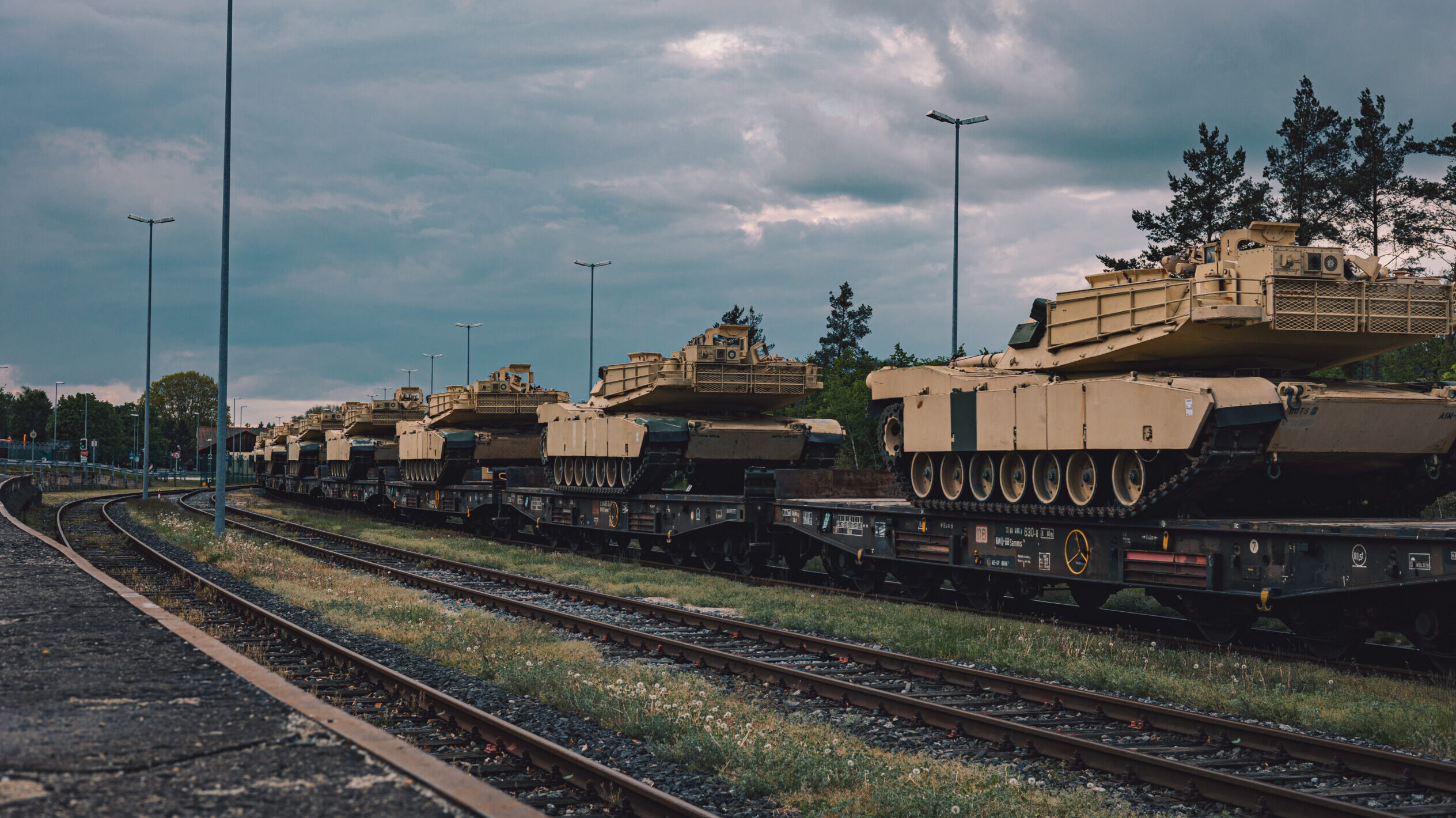
The modern operating environment is filled with examples of heavy main battle tanks suffering extensive damage in the battlefield.
Avdiivka, a city in eastern Ukraine, has now become a cemetery for Russian armor, tanks in particular. Trying to crush through the Ukrainian defenses surrounding the city, Russia reportedly lost over 100 tanks in three weeks.
In around just over a year since the outbreak of the Russo-Ukrainian War, both belligerents lost around half of their tanks. The Russians have lost about 1688 tanks out of 3400, while the conflict cost the Ukrainians around 459 tanks out of 900.
In Gaza, Hamas and Palestinian Jihad militants ambushed Israel’s famous Merkava tanks using creative guerrilla tactics. One prominent example saw them reportedly placing an explosive under the tank’s Trophy active protection system, before running away and shelling the tank with tandem charged RPGs from a safe distance. With such tactics, militants heavily damaged platforms advertised to be powerful war machines.
Yet, military experts claiming the knights of the battlefield are losing their “charisma” in the modern age need a reminder on the history of warfare. With every threat they faced, tanks have improved in agility, evolving to remain formidable foes. In the years to come, they will continue to do so.
Machine guns and fortified trenches made the operating environment of the First World War stagnant. Tanks caused a disruption in the static battlefield by providing a breaching operation capability through the heavily fortified trench systems, meeting a pressing operational requirement. The tank’s introduction to the battlefield marked the start of an endless struggle between tank and anti-tank weapon systems. As tanks’ cast steel armor got thicker, anti-tank canons grew their diameters. The introduction of anti-tank missiles with shaped charge shells that could be easily carried and fired by infantry on the battlefield, led to the emergence of reactive armor.
The impact will be felt in Ukraine war if US aid dries up
Jonathan Beale
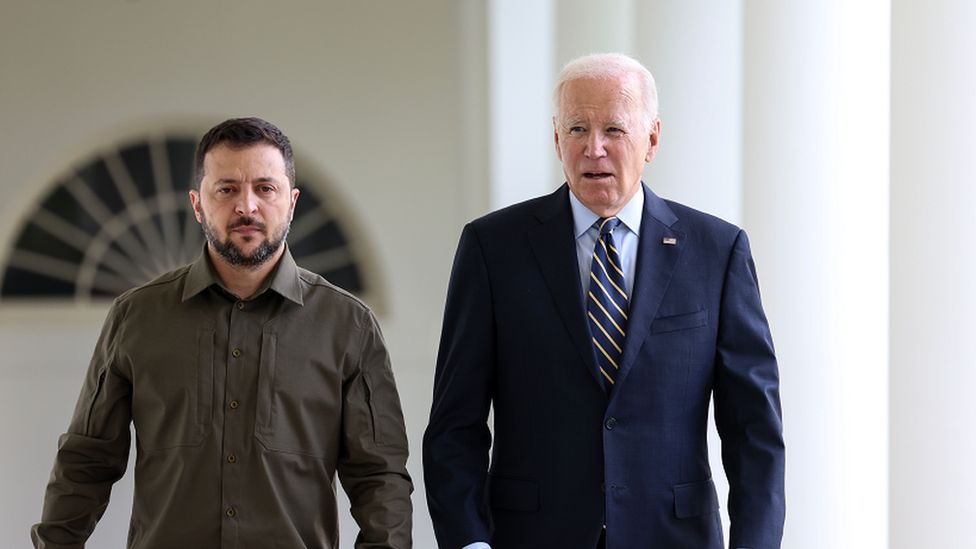
Without vital US military support there is a real danger Ukraine could end up losing this war - not immediately but in the longer term.
President Volodymyr Zelensky is in Washington to spell that out, hoping that he can persuade Congress to pass a $60bn aid package that has stalled amid a row over US border security.
On Sunday, Ukraine's first lady, Olena Zelenska, warned Ukraine is in mortal danger without continuing American support.
Western officials have told the BBC they remain confident the US administration will find a way out of the current impasse. But even if President Biden succeeds, the worries about where the US stands won't go away. A presidential election year will only bring more uncertainty.
It's America, not Europe, which has provided the lion's share of military support to Ukraine.
Europe is now on track to overtake the US in terms of economic support to Ukraine. But the US is well ahead in terms of military support.
According to the Kiel Institute, which tracks support, the US has donated €44bn worth of military equipment. Germany, the largest European donor, has contributed €18bn.
Space Development Agency, Army cooperating on alternates to GPS sat signals
THERESA HITCHENS

The Space Development Agency is now working with the Army to explore new options for satellite-based positioning, navigation and timing (PNT) as alternatives to GPS, according to SDA Director Derek Tournear.
“We’re working very closely with the Army, who’s been pioneering the alt-PNT across the Department of Defense,” he told the National Security Space Association today. “We’re working with them to be able to broadcast that same signal so it can be picked up by by existing, fielded and planned user equipment.”
He explained that the Army has an alternate PNT (alt-PNT) signal that still can be picked up by the Military GPS User Equipment (MGUE) Increment 2 radio chip sets — which primarily are being developed to allow access to the GPS constellation’s jam-resistant M-Code signal. That effort, however, is “a little ways in the future,” he said, only starting once SDA has launched its third iteration, confusingly called Tranche 2, of Transport Layer satellites to low Earth orbit to provide high-speed data relay around the globe. SDA plans to begin launching those birds in 2026.
The military is pursuing alternate PNT tech with the assumption that in a future conflict, units may be operating in environments where GPS is naturally not accessible or is being jammed by the adversary.
Tournear said that meanwhile SDA next year will begin launching the Tranche 1 Transport Layer satellites for regional communications, which also will carry a “navigation message” embedded in their venerable Link 16 data links.
The future of the world is intelligent: Insights from the World Economic Forum’s AI Governance Summit
Landry Signé

On November 16, the World Economic Forum’s AI Governance Summit convened over 200 global leaders, tech experts, academics, innovators, and policymakers to address the evolving landscape of artificial intelligence (AI) governance and shape its responsible future. The Summit offered a unique platform for insightful discussions at the forefront of ethical AI governance, and participants have engaged in the development of strategies, multistakeholder collaboration, and specific commitments for a safe, inclusive, responsible, and more “humane” AI. Anecdotally, the Summit couldn’t have been more timely given the new developments in the AI space, with a governance crisis resulting in OpenAI firing and immediately reinstating the CEO. As we distill the key takeaways from the Summit, several central themes emerge, offering a roadmap for responsible AI development.
Five takeaways
My five key takeaways from the AI Governance Summit are as follows:
1. Embracing transformation: The dual pacing and coordination dilemmas
The pace of technological change emerged as a central challenge during discussions. With technology evolving at an unprecedented speed, the imperative is not only to keep up with it, but to also leverage these advancements for the benefit of humanity. Ensuring safety, trust, and inclusion became a non-negotiable call to action at the Summit, prompting a call for multistakeholder cooperation. The consensus was that, as we navigate the swiftly changing tech landscape, we must engage deliberately, recognize differences, and foster trust through ethical design principles. Trust and ethics, positioned as design elements, should be incorporated from the outset to create inclusive solutions. In a Brookings report I co-published with Steve Almond, A blueprint for technology governance in the post-pandemic world, we proposed six steps to address the pacing and coordination challenges, including anticipating innovation and its implications, focusing regulation on outcomes, creating the space to experiment, using data to target interventions, leveraging the role of business, working across institutional boundaries, and collaborating internationally.
5.56 vs. 7.62: Which Designated Marksman Rifle (DMR) Is the King?
Travis Pike
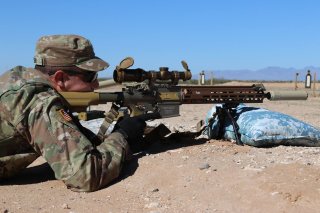
The DMR, or designated marksman rifle, has become an integral part of the infantry rifle squad. Numerous American and foreign forces have adopted some form of DMR into their squad. The designated marksman’s rifle sits between a standard infantry rifle and a sniper rifle. In the United States and in most foreign military forces, two calibers rule the DMR, the 5.56 and 7.62 NATO. Today we’ll explore the pros and cons of both.
THE ADVANTAGES OF THE 5.56 DMR
The 5.56 designated marksman rifle is often an accurized M16 equipped with an optic. These rifles have changed through time, and the most well-known is the Mk 12.
One of the big advantages of the 5.56 is that it is a lightweight rifle and uses lighter ammunition. Lighter rifles are easy to maneuver and easier to carry over long patrols.
The 5.56 ammunition allows you to carry more ammo and more ammo is often better than less ammo. A 5.56 DMR has less recoil and muzzle rise and is, therefore, easier to control. You can very comfortably control the gun, and less recoil ensures you can fire faster follow-up shots.
On a logistics front, the use of the same ammunition and magazines simplifies things for a rifle squad: It’s easier to carry one type of ammo and use it in a pinch. The 5.56 DMR is best suited with high-quality ammunition, but a shooter can also toss in standard M855 ball and rock and roll.
THE ADVANTAGES OF THE 7.62 DMR
The 7.62 DMR has been around a lot longer than the 5.56-caliber DMR. The military produced the earliest variants from old M14s and accurized the rifles for longer-range performance. The Russians used a 7.62x54R rifle for the longest time and essentially pioneered the DMR with the Dragunov.
Here are the Army’s new planned EW, signals programs
JASPREET GILL
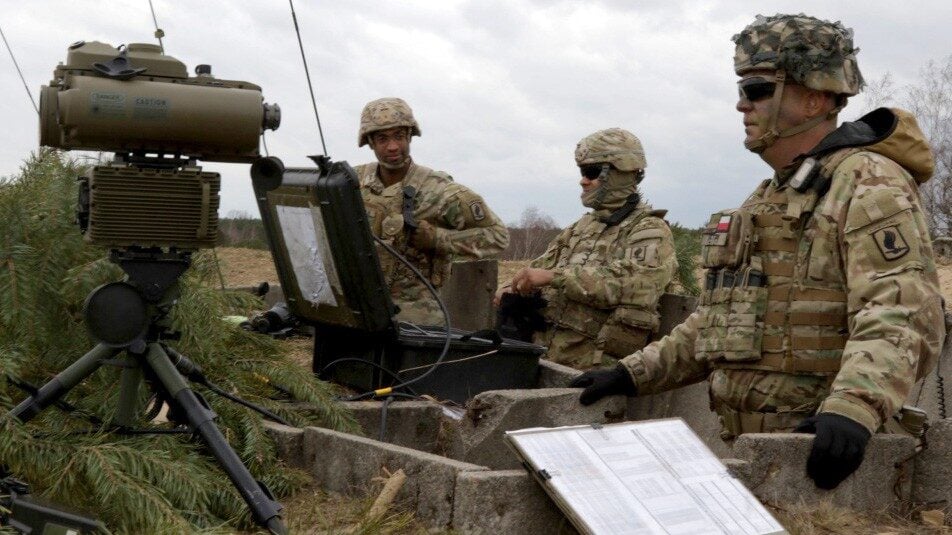
The Army is making progress on several programs on the electronic warfare, intelligence and sensors front, and the official in charge of making those efforts a success is gearing up for some new starts over the next fiscal year.
Speaking with reporters on Tuesday, Brig. Gen. Ed Barker, program executive officer for intelligence, EW and sensors, provided some updates on already-established EW programs and new starts planned for fiscal 2025 and beyond. Those include:
- Theater Signals Intelligence Program: TSIG, a new start in FY25, will “provide the tactical commanders at echelons above corps with a forward deployable and remotely or even locally controlled signals intelligence systems and supporting potential … contingency operations,” Barker said. The effort is a “conglomeration of existing capability” that supports theater intelligence collection, Kenneth Strayer, project manager for EW and cyber, added.
- High Altitude Platform for deep sensing: Another new start in FY25 which has gained interest across the military services, the Army will be looking at what capabilities it can acquire “from either a high-altitude balloon, solar and fixed-wing aircraft, really looking at affordability and the balancing of low SWAP and high efficiency sensors to take advantage of HAP capabilities,” Barker said. You can expect to see more requests for information come out for HAP in the next four to six months, he added.
- Modular Electronics Spectrum System: This program, which uses electromagnetic techniques to confuse and disrupt adversaries, is planned to be a new start in FY26, and Barker said the capability is really important in the European theater right now.
- Spectrum Situational Awareness System: S2AS, a new start in FY25, can provide sensing and visualization and would allow commanders to see their command post signature in real time, Barker said.
- High Accuracy Detection and Exploitation System: The aerial intelligence program was recently approved to move into a middle tier acquisition for rapid prototyping, Barker said. Phase one of HADES will include two different aircraft with different sensor packages, and the goal is “to demonstrate the flexible aspect of the capabilities themselves and also to understand the best of breed that we want to pursue from a production standpoint,” he added.
Subscribe to:
Comments (Atom)